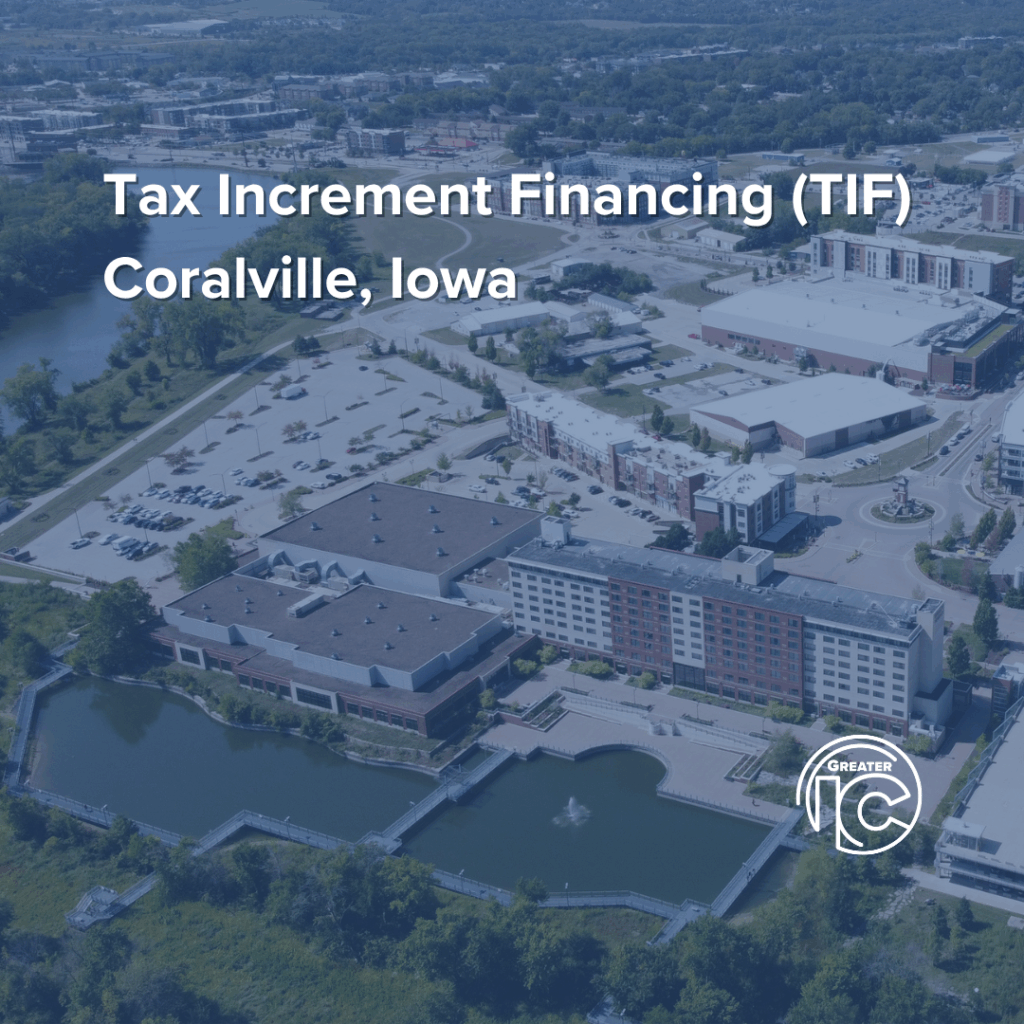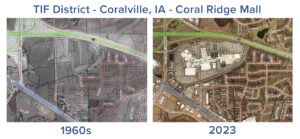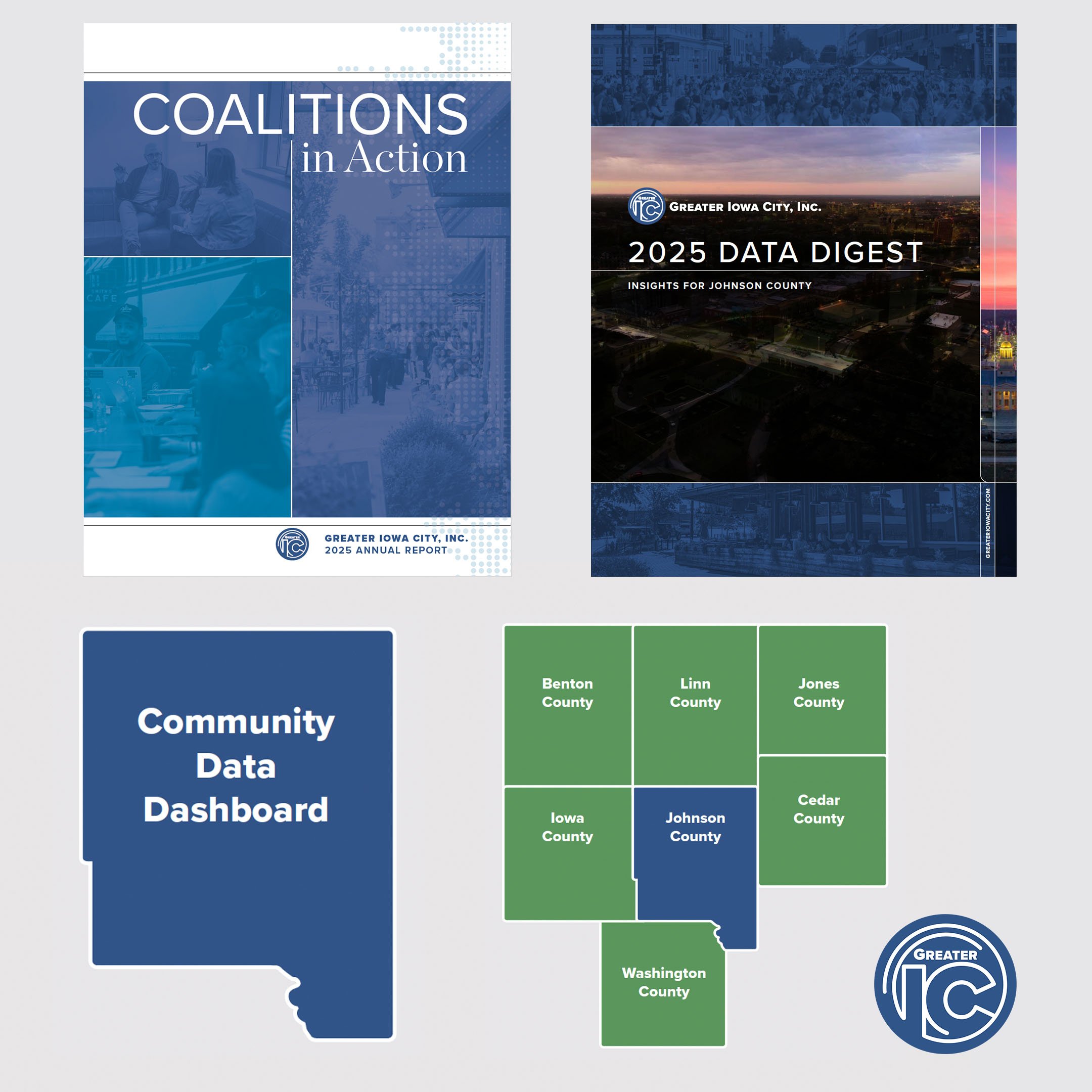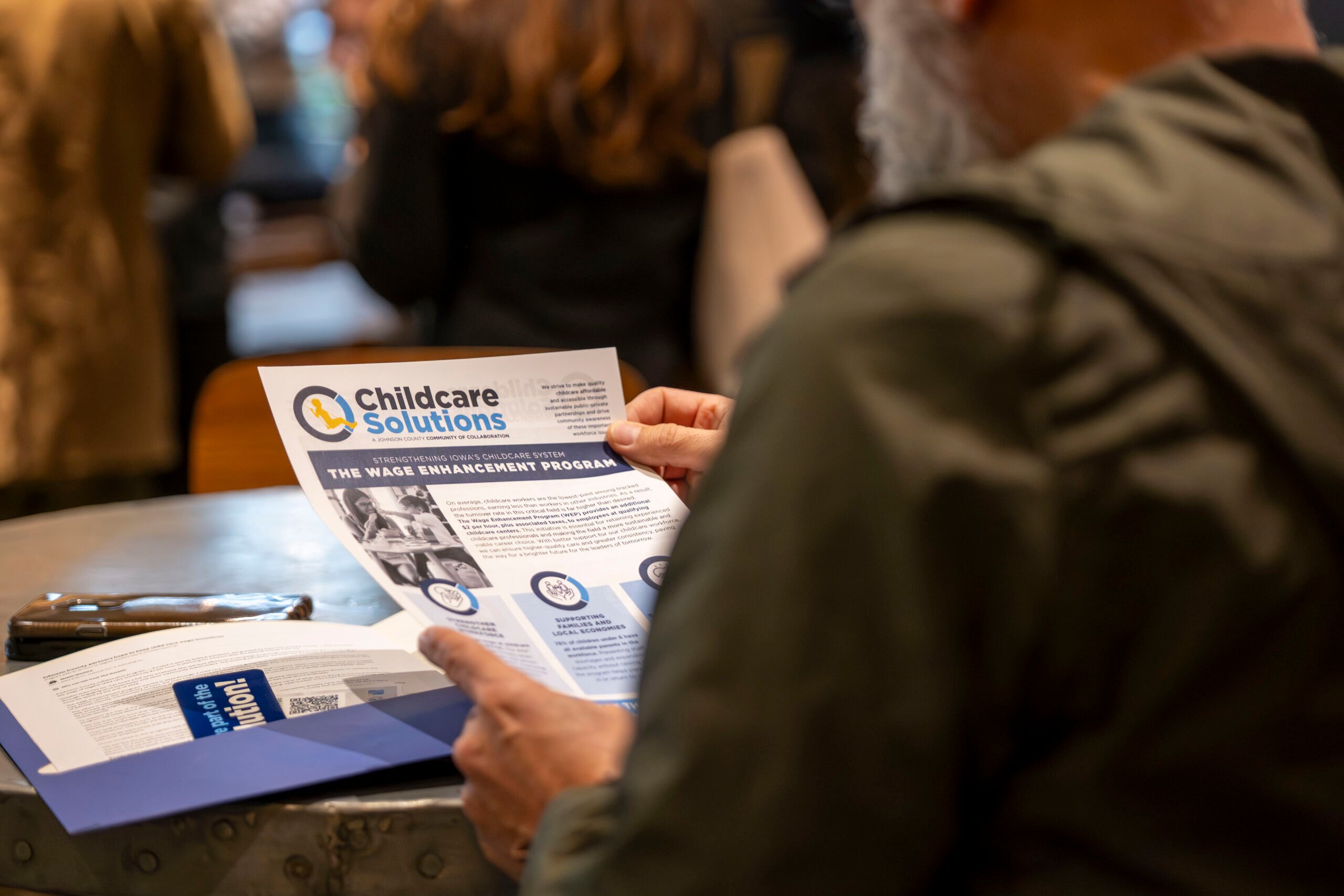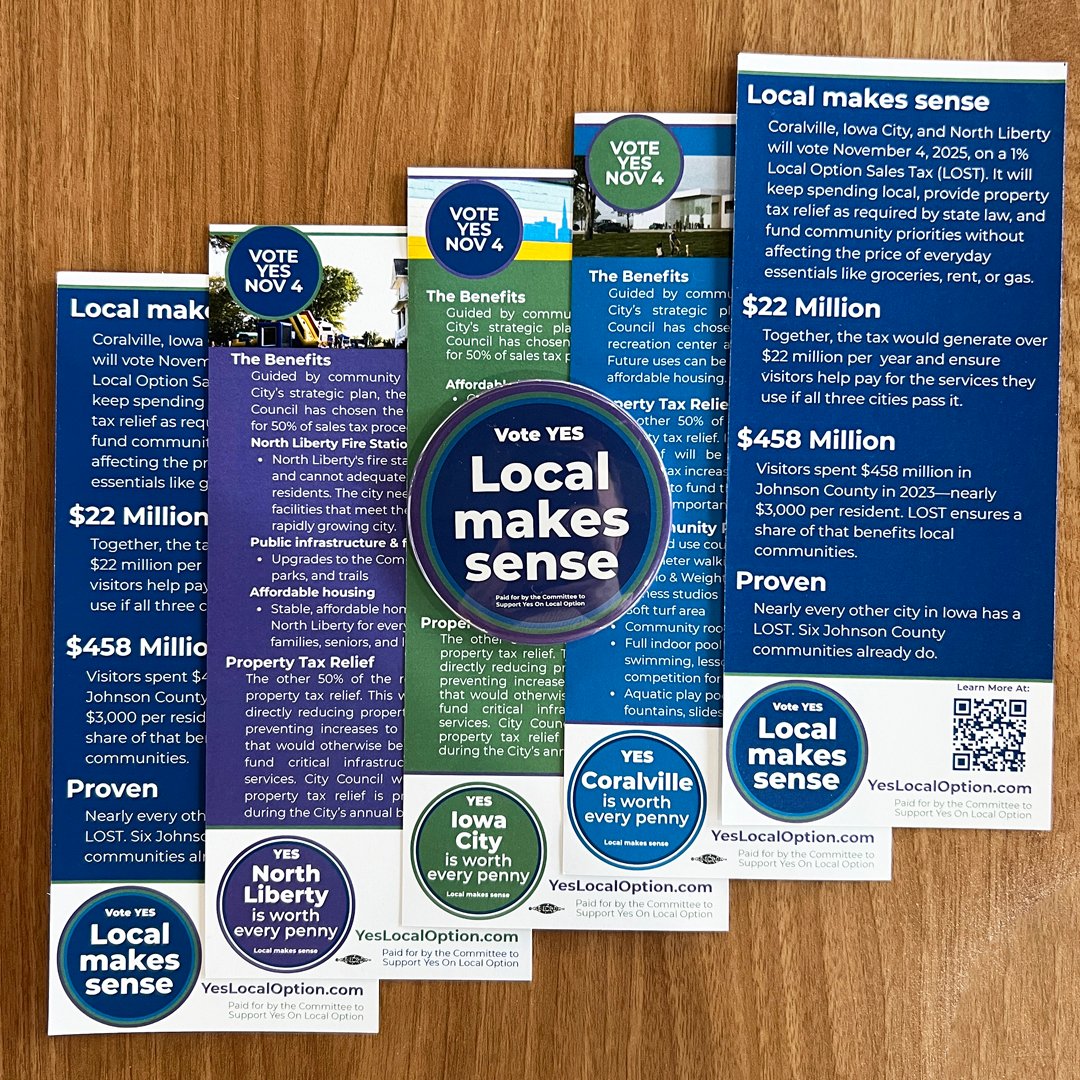Tax Increment Financing (TIF) is one of Iowa’s most practical, surgical tools for turning long-range plans into real projects. When an urban renewal area is identified, the new property tax revenue created by the new investment (the “increment,” which is the difference between the base value and the new taxable value) can be temporarily redirected to pay for eligible costs that make robust investment possible: public infrastructure improvements (like streets, water, and sewer), demolition, and land acquisition. It can also fund economic development activities, such as commercial and industrial projects, and some housing development initiatives. The tax paid on the base value continues to all taxing bodies, but the growth above that base can be captured to pay eligible costs. This authority lives in Iowa Code Chapter 403, and, specifically, the division-of-revenue mechanics in §403.19.
How it works:
- Designate an Urban Renewal area that spells out the purpose and the types of projects that will be pursued. Public hearings and formal notice to taxing entities are required before approval.
- Adopt a TIF ordinance for the area, certify (bonds, internal loans, pay-as-you-go rebates) to the auditor so the increment can be collected. Annual state reporting is required.
- Use the increment to reimburse eligible public costs or developer rebates per the agreement and plan. When the debt is retired or the area sunsets, the full value of the base and the improvement returns to the regular tax rolls.
In Johnson County, local jurisdictions use TIF to back infrastructure and site readiness, and, where it aligns with adopted plans, to structure rebates that close feasibility gaps on private projects. Translation: you get the road, the sewer, the site, and a project that pencils.
While TIF authority sits in Chapter 403, the Iowa Economic Development Authority (IEDA) has signaled, through both its programs and statements, that workforce housing is economic development. That’s obvious in the scale-up of the Workforce Housing Tax Credit (WHTC) and the Thriving Communities work. In September 2025, IEDA announced $35.9M in WHTC awards for 63 projects (including 2 in Johnson County), creating approximately 2,000 units throughout the state, emphasizing readiness, financing, and community impact. All of these are indicators that housing supply is one of the State’s priorities.
At the Capitol this year, multiple bills would have explicitly tied workforce housing to economic development in code, clarifying that development policies should advance workforce housing, and, in one proposal, defining “low- and moderate-income family housing” to include projects meeting Workforce Housing standards (Iowa Code 15.353). Even where bills were substituted or withdrawn, the trajectory is unmistakable: align Iowa’s core tools (including urban renewal/TIF) with workforce housing outcomes.
The Professional Developers of Iowa (PDI), the state’s largest organization of developers, legislative priorities emphasize more capacity for workforce housing and modernization of tools to keep projects moving; calling out the demand-supply gap in housing and supporting stronger, flexible financing mechanisms. In PDI’s statewide trainings this fall, counsel highlighted the policy push to explicitly include workforce housing in TIF law, reflecting the profession’s consensus: if you want workers, you need units, and your finance toolbox should say so in black-and-white.
With the right plan language and findings, TIF can support housing. Iowa’s Urban Renewal law already allows public improvements related to housing and requires LMI (low- and moderate-income) set asides in certain cases. The policy conversation is about making the statute more explicit for workforce housing, reducing ambiguity for councils, bond counsel, and auditors. Several drafts aim to do exactly that by aligning Chapter 403 definitions with Workforce Housing standards used by IEDA (15.353-15.355), which define eligible housing types, income bands, and project criteria.
If you’re a public entity using urban renewal authority, here’s how we can amend and optimize TIF as a strategic development tool:
- Restate or amend the Urban Renewal Plan. Add clear objectives (e.g., workforce housing near job centers, brownfield reuse, corridor investment), eligible activities, and geographic boundaries that match your comp plan and capital plan.
- Define project-type lanes inside the plan:
- Public infrastructure and utilities (streets, water/sewer, storm, fiber).
- Site readiness (grading, environmental, demolition).
- Structured parking tied to mixed-use districts.
- Performance-based rebates for private vertical projects that hit your metrics (unit counts, affordability bands, mixed-use, sustainability).
- Bake in housing clarity. If your council wants to prioritize workforce housing, add policy language that references workforce housing standards (15.353) and identifies your target bands, locations, and design expectations (e.g., missing-middle in walkable districts). This alignment will age well if/when the legislature finalizes workforce-housing-in-TIF language.
- Use the right financing instrument for the job. Pair general obligation or revenue bonds for shared public improvements with pay-as-you-go rebates for private projects. Keep the debt certification clean and current with the county auditor.
The bottom line for Johnson County is that employers are growing, and housing must keep pace. The state is talking about workforce housing; local TIF policy should be aligned to leverage that momentum.
TIF is flexible – the amend-and-align steps let Iowa City, Coralville, North Liberty, Tiffin, and Johnson County target infrastructure and gap-closing rebates where they move the needle most. Clarity reduces friction. By adding explicit workforce housing goals and definitions into plans, it will speed up projects from concept to close as state code catches up.
